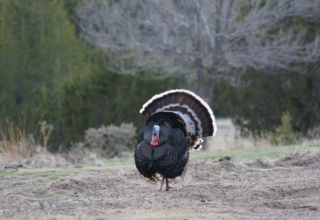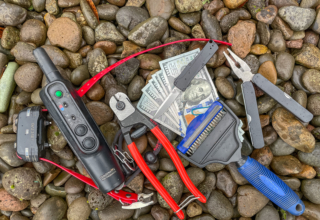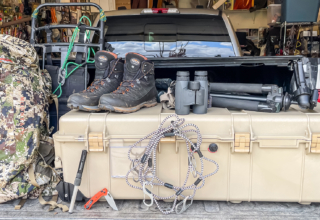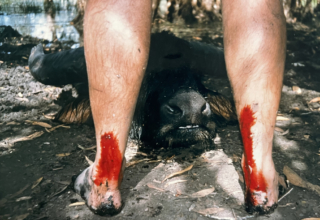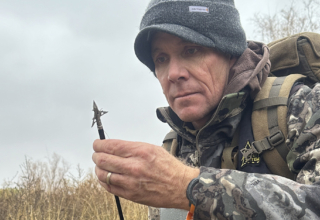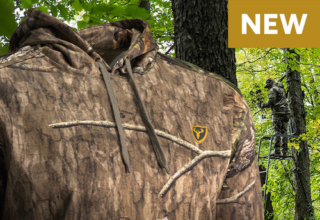Knowing what basic turkey talk sounds like and being able to mimic these sounds will make the difference between a fan bobbing over your shoulder and tag soup.
by Scott Haugen
As I write these words, spring turkey season is only a few days away. Where I live in the Pacific Northwest, it’s believed to be our most harsh spring conditions since the early 1980s. I’m scouting for turkeys daily, and what I see is far different from last season.
Many hens and juvenile birds are still in large family flocks. Several toms are in bachelor flocks of the same age class, and their strutting and gobbling have been very subdued. We’re supposed to have freezing temperatures and snow the next few days, which may further delay turkey courtship and breeding activity.
Knowing this, I plan on hunting on opening day in some extensive stands of Douglas fir timber. We’ve had constant rain for days, and this is where many of the turkeys have been seeking shelter. The hens spend a lot of time preening, and because they’re in family flocks, the birds are vocal when there’s a break in the weather.
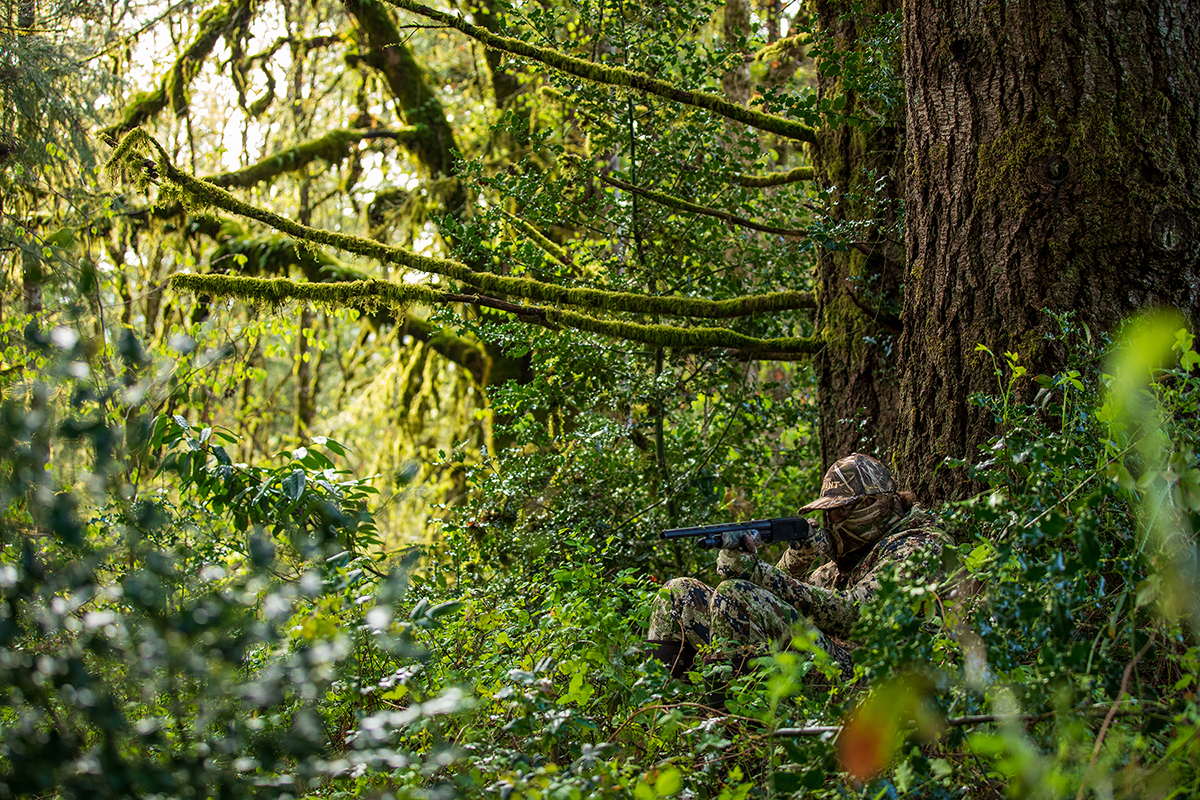
On opening day, I plan to emulate what I hear from turkeys, such as soft hen yelps with more kee-kees than I usually use this time of year. I’ll also use deeper-sounding tom yelps, which I’ve detected on my Stealth Cam trails cam video clips lately. For my decoy setup, I’ll use a new Preening Hen from Dave Smith Decoys and possibly an Upright Hen if birds hang out in big numbers and the rain continues to fall.
I’ve been fortunate to hunt turkeys in many places around our great country, and I base much of my calling on what the birds do at the time and place I’m hunting.
One season began in Florida in 80-degree temperatures, and I also hunted on a 16-degree day with snow in Washington state a few days later. Knowing what sounds turkeys make, and more importantly, what they mean, has dramatically impacted my nearly 40 years of turkey hunting.
While turkeys are vocal all year long, here are some sounds to tune into this spring.
Hen Yelp
The hen makes the most commonly heard sound in the turkey woods, called a hen yelp or plain yelp. Toms and jakes also yelp, but it’s louder, raspier, and usually more drawn-out than that of hens.
The hen yelp is an introductory call and the most straightforward sound. I’d say 80 percent of the toms I’ve called in — and seen called in — have come to a hen yelp. These sounds are usually delivered in a series of one-note tunes and occur when turkeys are within sight of one another. It sends the message that everyone is safe and lets one another know where they are.
Yelps can range from three to seven notes, even up to nine or ten as hens get more excited. The pitch and volume remain constant, with three to four notes created per second and each burst lasting up to .10 seconds. The sequence is simple and resembles a chirp, chirp, chirp, or a yup, yup, yup sound.
Yelps are easily made with box calls, slates, diaphragms, and push-pull calls. The yelp is a good call to bring birds in close, whether you can see them or not. Should birds appear edgy, plain yelps can help calm them. Yelps will also bring in hens, and toms will likely follow them.
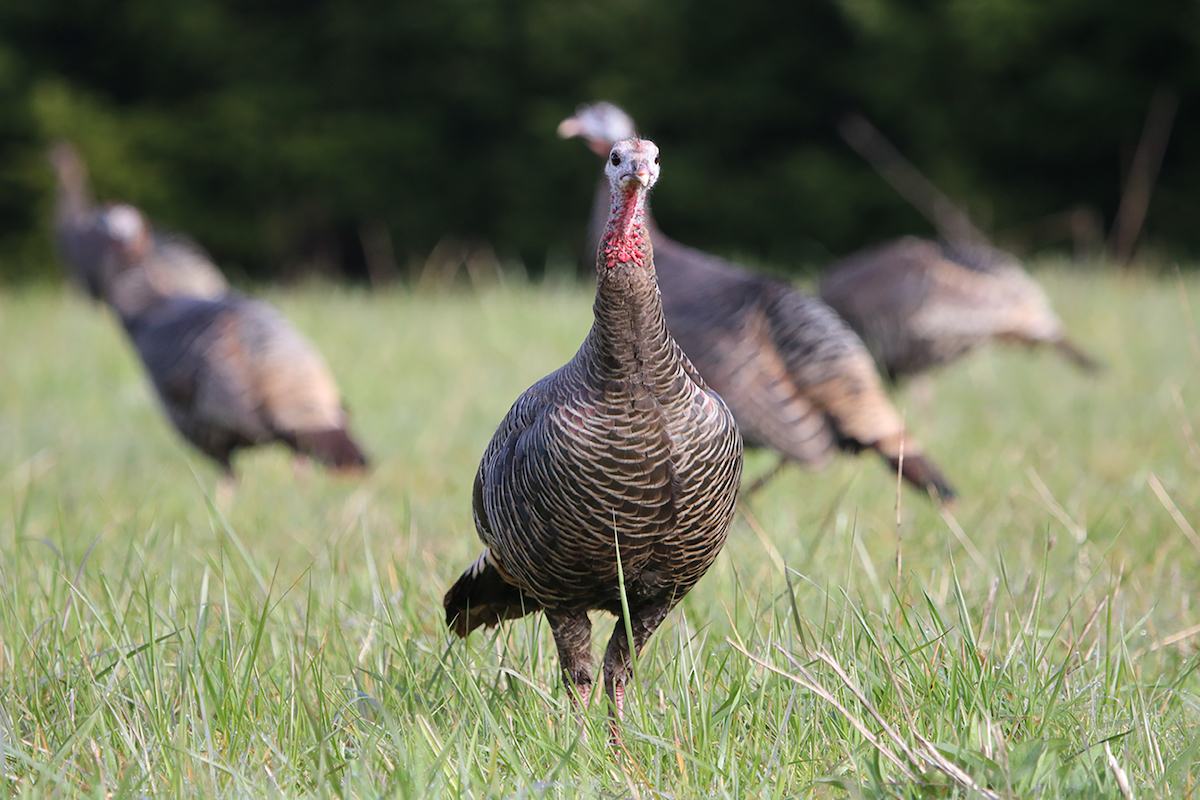
The Cluck
The cluck is one of the most basic sounds in the turkey woods, but it still carries a strong meaning. The one to three-note sequence goes like tuck…tuck,…tuck. Its purpose is to get another bird’s attention or reassure an approaching tom that a hen is waiting. It’s a pleasing, attention-grabbing, simple, yet powerful sound when bringing in a tom.
Clucks are made up of one to three single, staccato notes, usually separated by two to three seconds. A cluck’s sharp, crisp sounds are mainly used when an approaching tom hangs up in sight of your setup.
Often, hens are called in with clucks, and I think this is because when turkeys cluck, they like hearing others respond in the same way; it’s their way of saying, “I’m here, and all is safe.” This is true with hen yelps, too. Clucks are not as intense or abrupt as putts, which is an alarm call.
When birds feed, clucks are often made in conjunction with purrs. Clucks and purrs send a message that all is safe and the birds are content, especially in a flock situation. Clucks and purrs, together, sound something like tuck, tuck, errrrr…..tuck, errrrr…tuck, tuck, tuck, errrrr, tuck. Using the cluck and purr together is natural and convincing if looking to pull in wary toms or hens. They’re also good, calm sounds to stop a tom for a shot.

The Purr
As with the cluck, purrs can easily be made on slates, box calls, and push-pull calls. Purrs are tougher to make with diaphragm calls but are worth mastering when you find yourself in the open and need to call hands-free to bring a tom in closer or stop him for a shot.
Purrs are relaxing, almost bubbly sounding, reassurance calls. They send the simple message that birds feel safe. When a flock of birds spreads out, feeding in early spring, purrs can continually be heard. Purrs are soft sounds that roll in a smooth, calming fashion, thus, are not very loud. The purr is a single, drawn-out note that sounds like, errrr. This is a great call to offer when toms are close, especially if they seem nervous.
Kee-Kee
The kee-kee is a call commonly associated with fall turkey hunting. But I’ve had great success with it early in the spring when conditions are cold and wet, and birds are in large flocks. The purpose of the kee-kee is to reassemble broken flocks, and the sound is largely made by young birds who’ve lost track of the congregation and are looking to reassemble with adult birds. Adult birds, primarily hens, also make variations of these sounds, and this is what toms will often respond to.
The kee-kee is usually made up of three relatively coarse and somewhat unevenly spaced kee, kee, kee sounds that, in total, last just over a second. The key to making this call work is sticking to the magic three-note sequence, not extending it. As birds mature, the kee-kee sounds become slightly raspier, which is what you’ll hear in early spring.
The Cutt
Cutts are a series of loud, insistent, fast-paced, single-note sounds turkeys use to announce their presence, often hoping to hear another turkey’s response. It says, “If you hear me and are ready to breed or simply socialize, come find me.”
Cutts are easy sounds on a box or slate call, but diaphragm users may find it challenging due to the complex, stop-start, and rapid pace. Cutts are made in fast bursts of two or three notes, usually followed a second or so later with more of the same. The sequence sounds something like; tut…tut….tut, tut, tut, tut…tut…tut…tut…tut. tut. tut, tut, tut. The sequence varies widely, so if offering these sounds, don’t feel like they have to be exact.
Many hunters like using cutts to locate toms by getting them to shock gobble early in the morning. I use cutts any time of day, all season long, because they are natural turkey sounds used to announce their presence and because they are loud and carry well in the big terrain of the West where I do much of my hunting.

There are other sounds turkeys, and turkey hunters make, many more. But the ones we’ve looked at here are the basics hunters should be able to recognize in the woods and create on their own at any moment.
This turkey season, listen closely to the birds in your area. Know that their sounds — especially in the early season — can vary daily, even hour to hour on those stormy days with momentary sunlight breaks. Being equipped with the right calls, and making the right sounds at the right time, can make a big difference when bringing in a boss tom.


